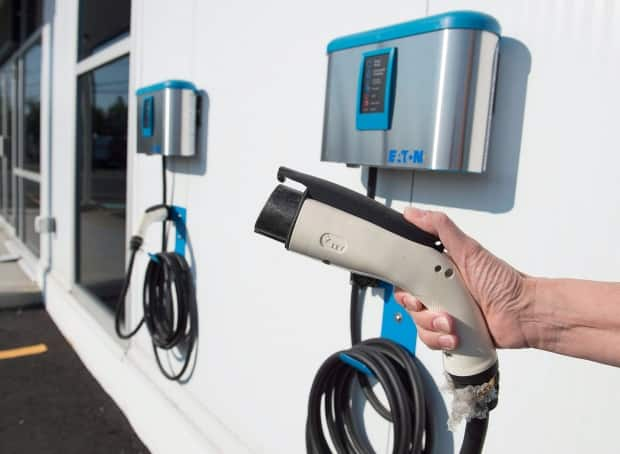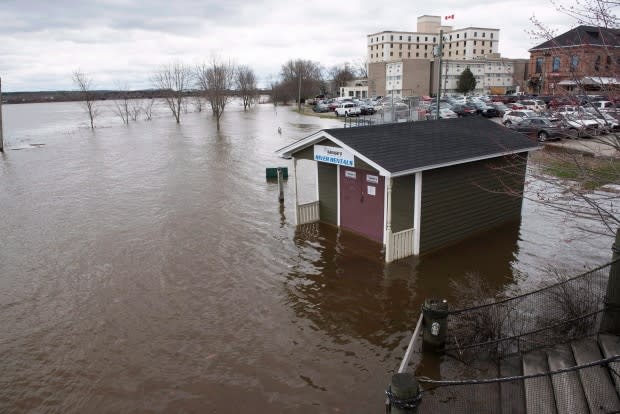5 green infrastructure projects engineers recommend to boost COVID-19 economic recovery

With at least two million jobs lost across Canada due to the COVID-19 pandemic and the economy officially in recession, more stimulus is expected from the federal government to get the economy moving again.
To date, the government has spent more than $145 billion on direct support for Canadians related to COVID-19.
Beyond what has already been pledged for stimulus, experts say additional investments in infrastructure, especially related to clean technology, are one of the best ways to get people back to work and to leave a lasting legacy.
Following the Great Recession of 2008, for example, Washington provided $983 billion US in stimulus spending but received little in the way of faster trains or better infrastructure, according to figures tabulated by Graham Allison, a Harvard University professor and former senior U.S. government adviser in his book Destined for War: Can America and China Escape Thucydides's Trap?
China, in contrast, used its stimulus to build a network of high-speed trains and other major projects, Allison noted.
To create tangible, long-term benefits and get people back to work, here are five stimulus projects engineers, clean energy advocates and other experts say should be launched.
Electric vehicle charging stations
Transportation accounts for 25 per cent Canada's greenhouse gas emissions, according to government data.
Many consumers are keen to transition to electric vehicles — but who wants to own a car you can't drive on a long-distance road trip due to a lack of charging stations on major highways?
"It's a chicken-and-egg situation," Kasun Hewage, a professor of engineering at the University of British Columbia, said in an interview. "People are not buying electric cars because they're worried about the infrastructure."
WATCH | Slow uptake for electric cars in Canada:
The government has announced $130 million in funding, over five years ending in 2024, to develop a national recharging network.
But that alone won't create enough charging stations to allow someone to drive an electric car from coast to coast, Hewage said, and the private sector is currently apprehensive about putting up the additional cash for installation.
Bruce MacKay, a managing director of Hatch, a Mississauga, Ont.-based engineering firm, said current programs for charging stations could be rolled out more quickly if subsidies for electric cars were reintroduced by provinces like Ontario, and taxes on gasoline were increased.
"A standardized, major roll-out of electric charging stations ... would accelerate the conversion of the vehicle fleet to electric," MacKay said.
Building a network to cover 25 per cent, 50 per cent and 100 per cent of the country would cost roughly $1 billion, $2 billion and $5 billion, respectively, said Hewage.
Cost: About $5 billion for electric charging stations to cover the whole country, Hewage said.

Improved water management
Climate change is expected to exacerbate flooding across Canada, and current water infrastructure — especially in big cities like Toronto and Montreal – isn't ready for the additional pressures.
"Canada's wastewater management system has a $50 billion deficit," said Rehan Sadiq, a professor of civil engineering at the University of British Columbia. "It's a major piece of green infrastructure from the perspective of climate resilience and Canadians' well being."
Fixing and improving aging pipe, sewage systems and treatment facilities would be a great way to create jobs and meet environmental targets, he added.
Water infrastructure is normally owned by municipal governments, but they often don't have the money needed for the upgrades, Sadiq said.
The federal government has been spending some money on improving the system, he said, but the financing could use an additional shot in the arm. Provinces and municipalities might also pledge new funds if the federal government got the ball rolling, he said.
Cost: $3 billion initially from the federal government, Sadiq estimated.

Energy efficient homes
Provinces are currently spending about $1 billion annually on subsidies and other programs to make homes more energy efficient, according to calculations from Efficiency Canada, an Ottawa-based advocacy organization.
For that funding, about 0.6 per cent of buildings in Canada can be retrofitted annually, said Brendan Haley, the group's policy director.
"That could be ramped up significantly," he said in an interview. He said doing so wouldn't create new bureaucracy, as the provincial programs, assessment criteria and disbursement plans for subsidies or loans to homeowners already exist.
Energy consumption for homes and buildings accounts for 17 per cent of Canada's greenhouse gas emissions, according to government data.
The total cost of retrofitting every building in Canada by 2050, a necessary shift in order to meet climate change commitments, would be about $300 billion, Haley said.
Energy-saving retrofits for most houses include techniques such: installing better insulation, improving windows to reduce heat loss, installing a zero carbon heating system, and in some cases, solar panels.
WATCH | Pandemic won't be a cure-all for climate change:
As a job creation strategy, retrofitting old buildings is especially effective, Haley said because about 60 per cent of the cost of a retrofit is spent on labour.
With residential construction expected to drop by about one-third this year compared to 2019 due to the pandemic, keeping construction workers employed with retrofits makes economic sense, Hewage said.
"Go small" costs: $11 billion in seed capital upfront for a green infrastructure bank, $500 million for training new workers.
"Go big" costs: $300 billion over the next 15 years, Haley said.

Rebuild bridges, roads and tunnels
Broadly, Canada's infrastructure deficit is more than $150 billion, according to the Canadian Federation of Municipalities, a coalition of city governments.
Following the Second World War through the 1950s, Canada was spending roughly three per cent of the GDP on infrastructure, compared to about 0.4 per cent today, said UBC's Sadiq.
This lack of spending means the quality of key transportation links is deteriorating, causing safety fears and increased travel times, among other problems.
For bridges and tunnels, the infrastructure deficit is about $21 billion, according to the 2019 Canadian Infrastructure Report Card, a report from engineers and municipalities.
Forty per cent of bridges and roads are not in good condition and about 10,000 bridges need immediate attention, said Shahria Alam, a professor of engineering at UBC.
Cost: An initial investment of about $3 billion from the federal government, Alam said.

Clean up old mines, wells
The federal government recently announced $1.7 billion to help clean up orphaned and abandoned oil and gas wells in Western Canada.
A similar program should be launched for abandoned mines, said Sandro Perruzza, CEO of the Ontario Society of Professional Engineers.
In Ontario alone, there are some 5,000 known abandoned mines, closed prior to 1991, which have no current ownership, he said.
"These abandoned sites are an enormous environmental concern, such as ground water contamination of leachate, and pose additional health and safety risks to surrounding communities," Perruzza said in an interview.
Taking on the issue would improve land and water quality, especially in northern and rural communities, and would employ thousands of people, he added.
Cost: In Ontario alone, at least $2.59 billion, Peruzza said.



